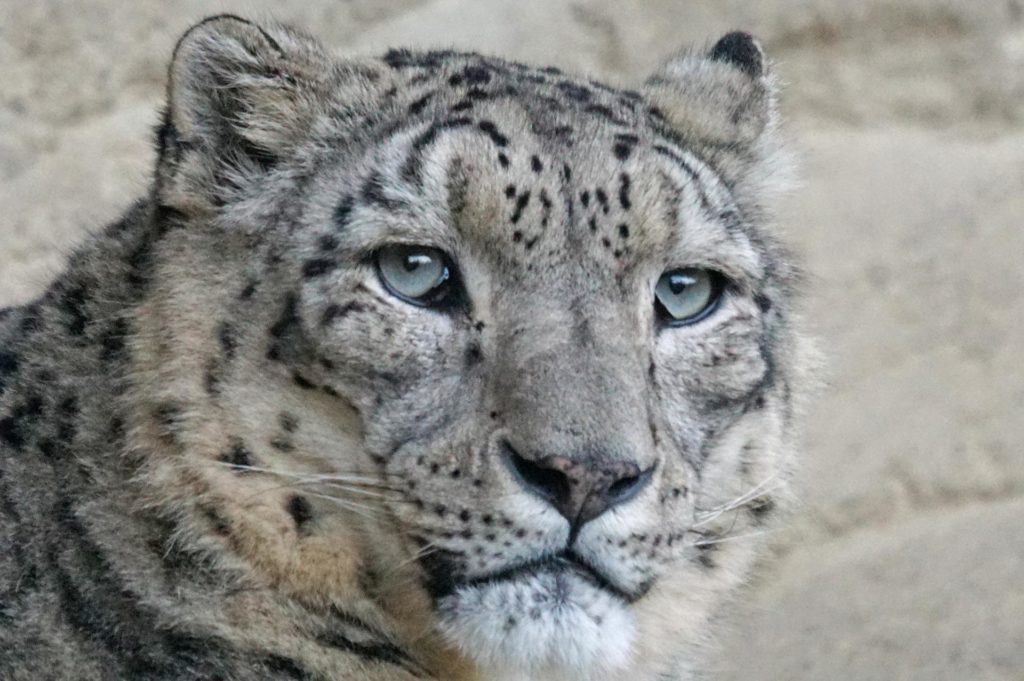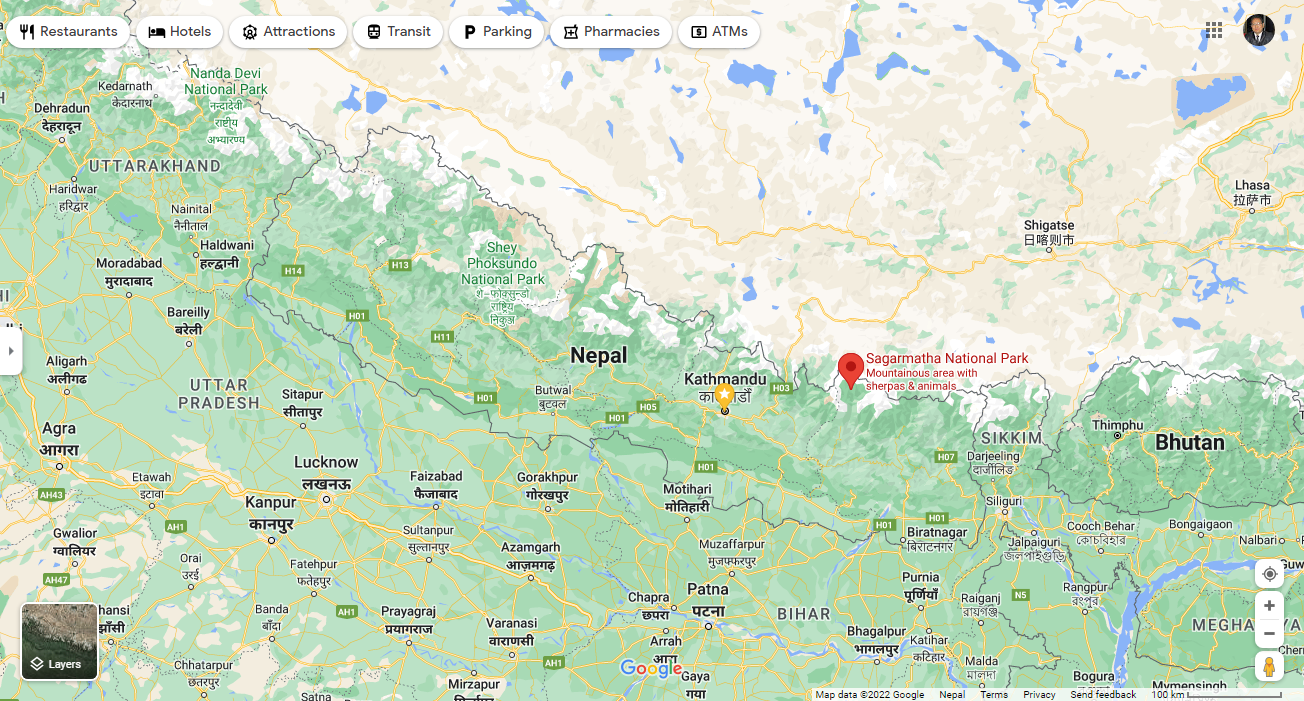Sagarmatha National Park lies in the Solu-Khumbu District of the Sagarmatha Zone in Nepal. It is a wildlife reserve where rare species of animals and birds are found. Animals like the red panda and snow leopard can be seen here. It is also a place for people who enjoy bird watching and mountaineering. It has important peaks such as Mount Everest like Pumori, Cho Oyu, Lhotse, Gyachyung Kang, Thamserku, Kangtaiga, Kwangde and Ama Dablam.
It is listed on UNESCO World Heritage Site. The area of Sagarmatha National Park is 1,148 Square Kilometers in the Solukhumbu District and ranges in elevation from 2,845 to 8,848 meters (9,334 to 29,029 feet) at the summit of Mount Everest.
Different types of animals are found in Sagarmatha national park such as red pandas, black bears, snow leopards, Himalayan thars and musk deer. Sagarmatha national park wildlife offers as much diversity as Nepal. Here you can find 208 bird species including alpine chough, bearded vulture, snow-cock and Impeyan pheasant.
In Sagarmatha National Park we can find many tree species like Acer caudatum, Acer pectinatum, Rhododendron wallichii, Quercus glauca, Acer stachyophyllum, Acer sterculiaceum, Rhus punjabensis, Rhus succedanea, Rhododendron hodgsonii, Rhododendron triflorum, Ilex dipyrena, Ilex fragilis, Leucosceptrum canum, Lindera pulcherrima, Ilex sikkimensis, Merrilliopanax alpines, Litsea cubeba, Litsea doshia, Alnus nepalensis, Betula utilis, Betula utilis, Corylus ferox, Quercus semicarpifolia, Philadelphus tomentosum, Rhododendron campylocarpum, Rhododendron cinnabarium, Euonymus fimbriatus, Euonymus porphyrens, Juniperus recurva, Lyonia ovalifolia, Magnolia campbellii, Abies spectabilis, Pieris formosa, Rhododendron arboretum, Rhododendron arboretum, Rhododendron barbatum.
History
Sagarmatha national park was established in 1976, it became Nepal’s first national park to be inscribed as a Natural World Heritage Site in 1979 and a Buffer Zone comprising 275 km2 (106 sq mi) was added in 2002.
Museum
Sagarmatha National Park Museum
Sagarmatha National Park Museum is located at Namche Bazaar which provides a lot of information. The museum covers the history of the area, natural flora & fauna and also about climbing.
Sherpa Museum
The Sherpa Museum is a small museum with just 3 rooms that serves as an homage to the Sherpas. You can observe Sherpa’s fascinating culture, lifestyle and history there.
Climate
Sagarmatha national park’s weather depends from season to season.
Autumn: During the autumn months (October-November) there will be cool weather. This season may be the best time for you to visit this national park if you like hiking. You’ll see breathtaking views of the surrounding hillsides in this region.
Winter: The winter season (December-February) is usually too cold during the day and nighttime temperatures usually fall below 0ᴼC. There will be snowfall so you may not get to see breathtaking views like in other seasons.
Spring: The spring season from March to June is the best. During this time you can enjoy the views of beautiful mountains and hills.
Summer: Summer is the season from July to September and during this period the chances of rainfall are quite heavy.

Special features of Sagarmatha National Park
Sagarmatha national park’s core area covers the upper headwaters of the Bhote Kosi, Dudh Kosi and Imja Khola rivers. It is enclosed by high mountain ranges and glaciers culminating in Mt. Everest.
Entry permit
You’ll need to get an entry permit from the visitor center at the National Park. It is located at Namche Bazaar and Monzo. Entry permit cost is different for locals, SAARC nationals and other countries. Locals and SAARC nationals entry permit fee is lower than in other countries. You may also require to show your passport to get the access pass. After getting a permit you may visit the park any time. Park is open for all tourists for 24 hours to offer convenience to visitors. Fees, rules and regulations may change from time to time.
How to reach Sagarmatha national park ?
You can reach Sagarmatha national park by air or by road.
By Air: Foreigners are required to first reach Kathmandu. From Tribhuvan International Airport in Kathmandu, you can reach Tenzing-Hillary Airport at Lukla. The total duration of the flight is about 25 minutes and from Lukla, the rest of the distance to Sagarmatha can be covered through a trek of two days. There is also a direct helicopter flight operating from Kathmandu to Everest.
By Road: The road route from Kathmandu is to the village of Jiri. From Jiri there is a trek of 10 days that will take you to the Sagarmatha national park and another alternative is from the village of Salleri, followed by a trek of 5 days.
FAQ
Why is Sagarmatha National Park a world heritage site?
This park is a world heritage site because it contains the world’s highest ecologically characteristic flora and fauna.
When was Sagarmatha national park established?
Sagarmatha National Park was established on 19 July 1976. Sagarmatha National Park was established on 04 Shrawan, 2033 according to the Nepali date.
Importance of Sagarmatha national park
Sagarmatha national park is important for many reasons, one of them is it has also been identified by BirdLife International as an Important Bird Area (IBA).
Sagarmatha National Park video
Short video on Sagarmatha National Park by UNESCO


Good day! I just wish to give you a huge thumbs up for your excellent information you have got here on this post. I am coming back to your blog for more soon. Good day! I just wish to give you a huge thumbs up for your excellent information you have got here on this post. I am coming back to your blog for more soon.